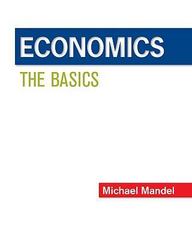Question
Question 1: Describe some of the opportunity costs when you decide to do the following. (a) Attend college or university instead of taking a job.
Question 1: Describe some of the opportunity costs when you
decide to do the following.
(a) Attend college or university instead of taking a job.
(b) Watch a movie instead of studying for an exam
(c) Ride the bus instead of driving your car.
Question 2: Suppose in the market for apples, the supply curve is P = 1 + 0.02Q and the demand curve is P = 3 - 0.02Q, where P is the price of apples and Q is the quantity of apples supplied or demanded per year. You may use a graph to help you visualize this problem, but you must solve for the numerical answers algebraically and show your step-by-step calculation or a zero will be assigned.
- How to solve for equilibrium quantity Q and price Pe of apples, total revenue to farmers TR, consumer surplus CS, producer surplus PS, and total surplus TSe.
- Suppose the government considers the equilibrium price P from part (a) being too high such that low-income households cannot afford to have "an apple a day" and it legislates to change the price of apples by $0.5 with a binding price ceiling P.. Show how to solve for the binding price ceiling Pc. At Pe, solve the quantity of apples supplied QcS and demand QcD, the quantity of excess supply (surplus) or demand (shortage), total revenue to farmers TRc, consumer surplus Sc producer surplus PS, total surplus TSc, and the deadweight loss DWLc.
- Following the notations: N12 represents the cross elasticity of the quantity demanded for good 1 when the price of good 2 changes, "a" for apples, "o" for oranges, and "b" for bananas. The cross- price elasticity of the quantity demanded for oranges when the price of apples changes is noa = 2, and the cross-price elasticity of the quantity demanded for bananas when the price of apples changes is nba = 1.5. According to the price change between part (a) and part (b), calculate the percentage change in quantity demanded for oranges and bananas. Do oranges or bananas result in a larger percentage change in quantity demanded? Explain. (Hint: Using the midpoint formula)
Step by Step Solution
There are 3 Steps involved in it
Step: 1

Get Instant Access to Expert-Tailored Solutions
See step-by-step solutions with expert insights and AI powered tools for academic success
Step: 2

Step: 3

Ace Your Homework with AI
Get the answers you need in no time with our AI-driven, step-by-step assistance
Get Started


